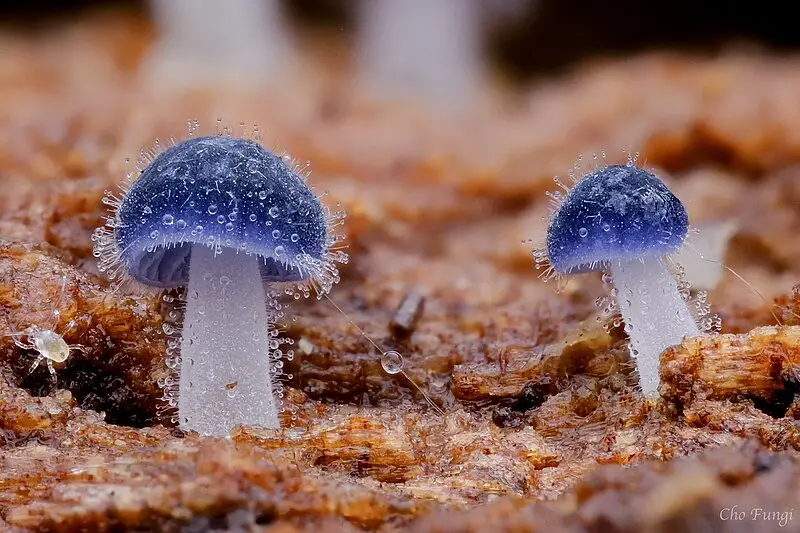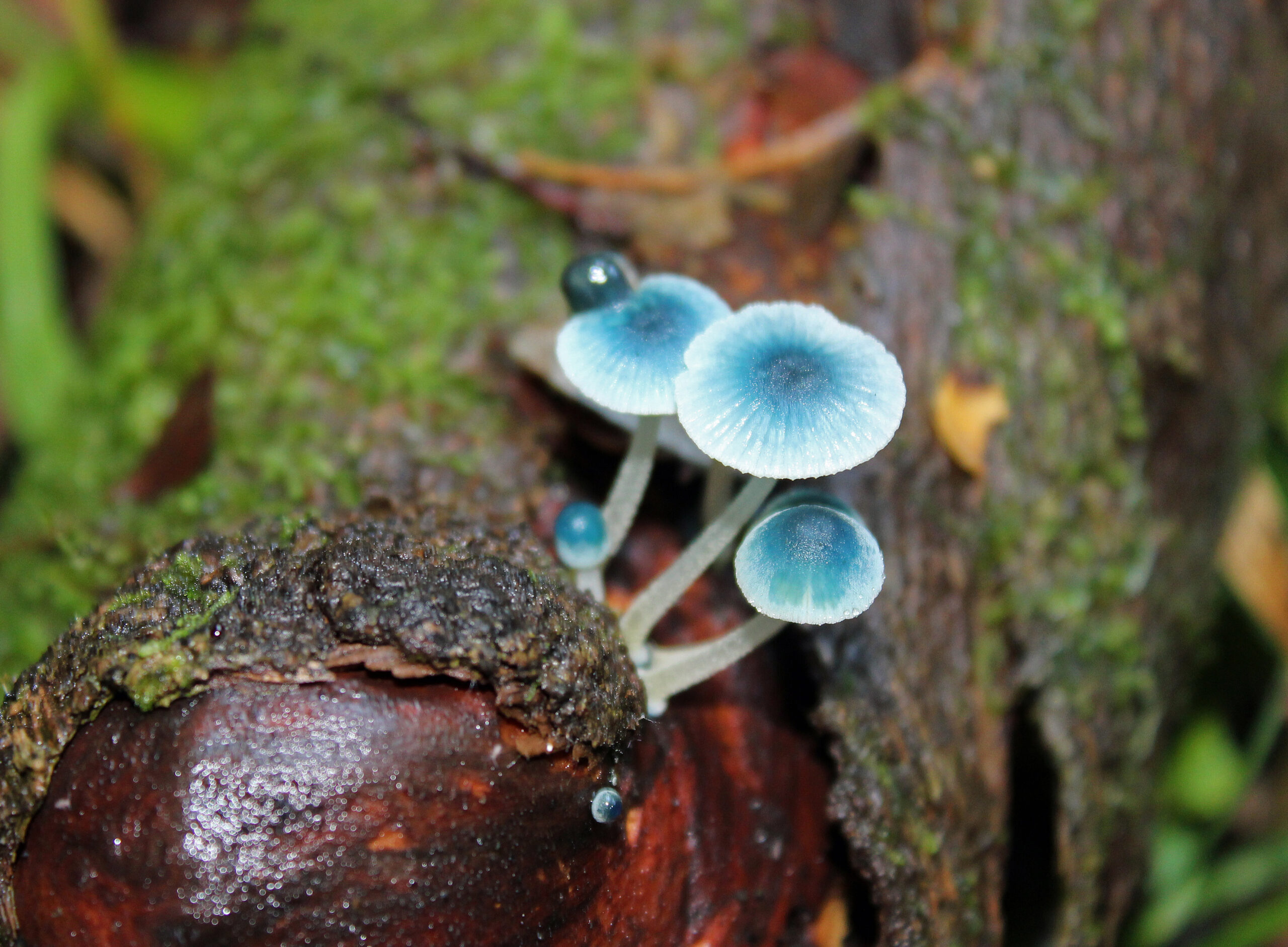In the lush, tropical forests of Taiwan, a remarkable new species of mushroom has been discovered: Mycena subcyanocephala. This tiny blue marvel, among the smallest mushrooms in the world, has captured the fascination of mycologists and nature enthusiasts alike. Let’s explore the intriguing details of Mycena subcyanocephala, its unique characteristics, and the significance of this recent discovery.
1. The Discovery of Mycena subcyanocephala
Mycena subcyanocephala was first identified in Taiwan’s tropical forests, a region known for its rich biodiversity and unique fungal species. This newly discovered mushroom is notable for its striking blue coloration and minuscule size. Although it has been spotted only eight times, the limited observations have already generated significant interest in the mycological community.
2. A Closer Look at the Blue Mushroom
One of the most fascinating aspects of Mycena subcyanocephala is its size. With buds measuring approximately 1 millimeter tall, it is one of the smallest mushrooms known to science. Despite its diminutive stature, the mushroom’s vibrant blue hue makes it a visually captivating specimen.
- Appearance: The mushroom features a delicate blue cap and stem, which can be difficult to spot against the forest floor. Its small size and distinctive color make it a unique addition to the diverse Mycena genus.
- Habitat: Found exclusively in the tropical regions of Taiwan, Mycena subcyanocephala thrives in the humid, forested environment. The specific conditions of its habitat are crucial for its growth and survival.

3. Importance of the Discovery
The discovery of Mycena subcyanocephala is significant for several reasons:
- Biodiversity: The mushroom adds to the rich tapestry of fungal diversity in Taiwan. Each new discovery helps scientists understand the ecological dynamics of tropical forests and the organisms that inhabit them.
- Conservation: Understanding the habitat and needs of rare species like Mycena subcyanocephala is crucial for conservation efforts. Protecting these habitats ensures the survival of not only the newly discovered species but also the broader ecosystem.
4. Fascinating Facts About Mycena subcyanocephala
- Microscopic Size: At around 1 millimeter tall, Mycena subcyanocephala is one of the smallest mushrooms in the world. Its size makes it an excellent subject for studying fungal morphology and development.
- Coloration: The vibrant blue color of the mushroom is a rare trait in fungi, adding to its allure and scientific interest. The precise mechanism behind its blue pigment is an area of ongoing research.

5. The Future of Mycological Research
The discovery of Mycena subcyanocephala highlights the importance of ongoing research and exploration in mycology. As scientists continue to investigate this unique species, they hope to uncover more about its ecology, biology, and potential uses.
Conservation efforts will play a critical role in ensuring that this tiny blue mushroom, along with many other undiscovered species, can continue to thrive in its natural habitat. The ongoing study of such species not only enriches our understanding of fungal diversity but also underscores the need to preserve the delicate balance of tropical ecosystems.
Mycena subcyanocephala is a testament to the wonders of nature’s smallest creatures. Its discovery enriches our knowledge of fungal diversity and emphasizes the importance of preserving natural habitats. As researchers delve deeper into the mysteries of this fascinating mushroom, we can look forward to learning more about the incredible biodiversity that exists within our world’s tropical forests.
Feel free to share your thoughts on this remarkable discovery or any experiences with rare fungi in the comments below!




